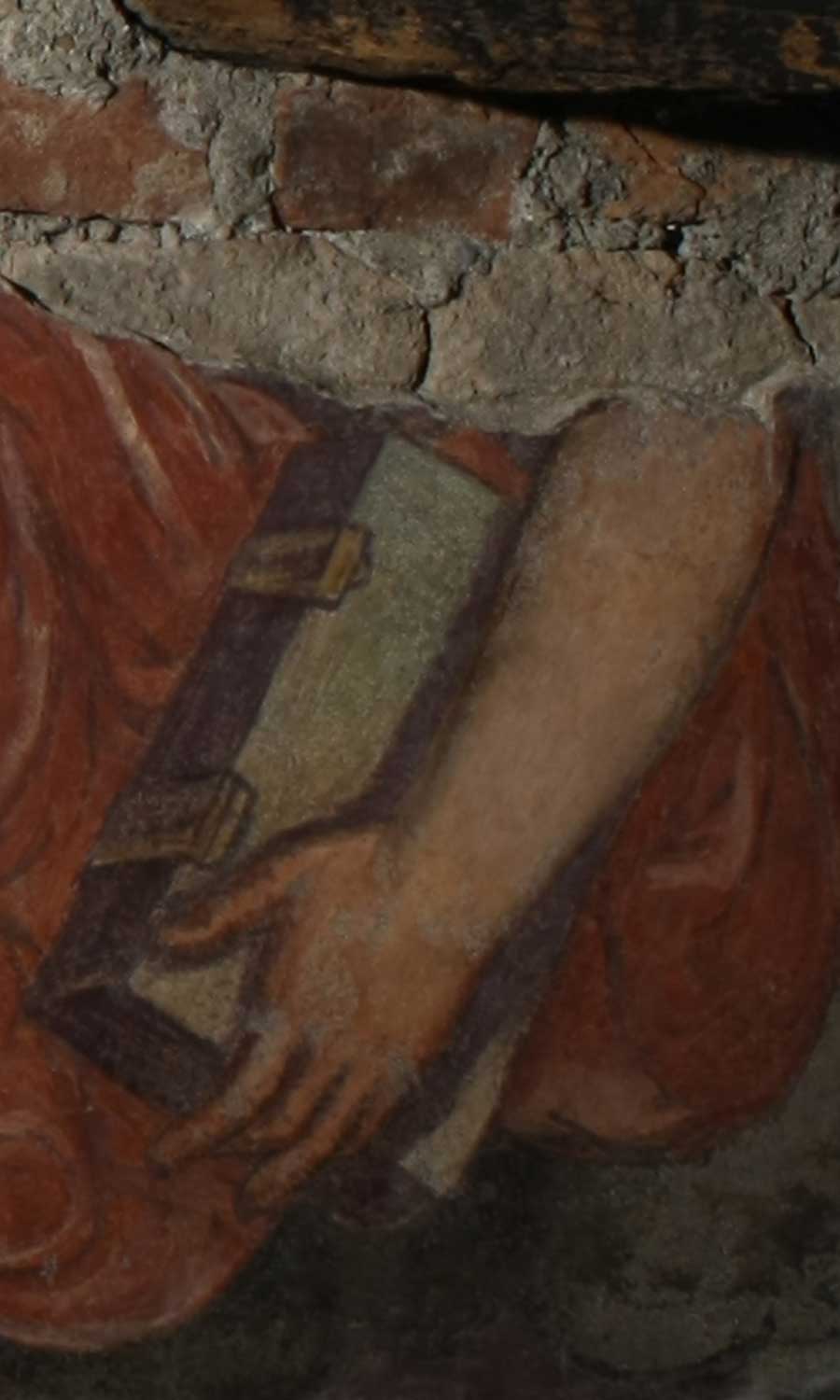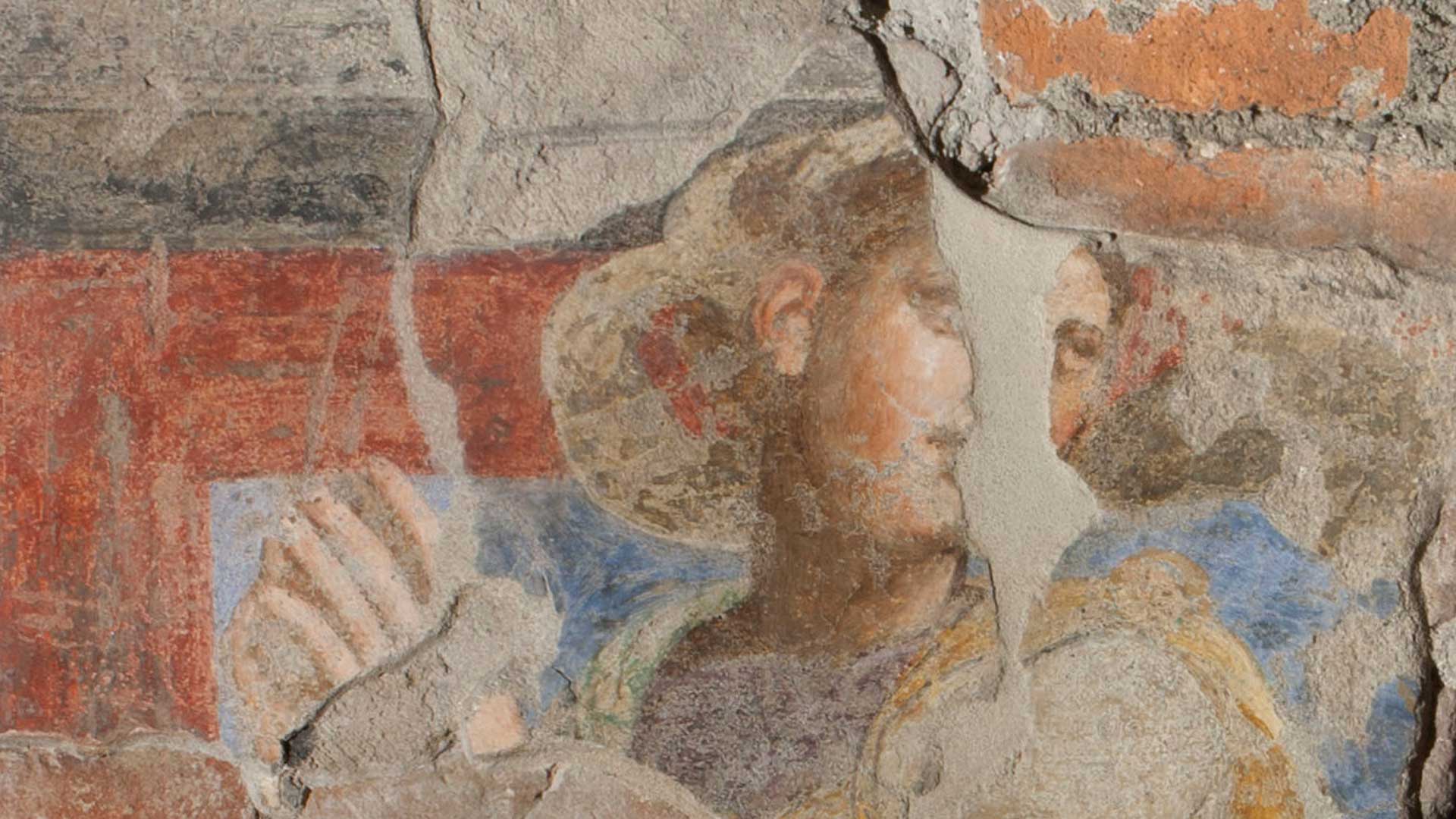Research is continuing, but some information has already been collected.

The decoration consists of architectural elements, cornices, scrolls and figures.
Some figures are depicted half length and set in painted round frames; others are represented full length in rectangular frames.
It seems that this was a decorative frieze running around the top of the walls of a large chamber.




The technique of execution involved two layers of plaster:
arriccio the arriccio (the deepest layer) is
on average about 6 mm thick and consists of a mixture of lime rich in sand and other aggregates;
the plaster, the layer on which the fresco was painted, is very smooth on the surface, it is 5 mm thick on average,
and has fewer aggregates in the mix, so being lighter in colour than the arriccio.







The research will continue and will certainly provide new information to better understand this place,
which has remained unknown and abandoned for more than a century.